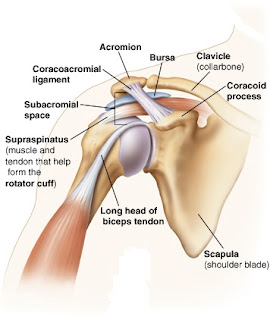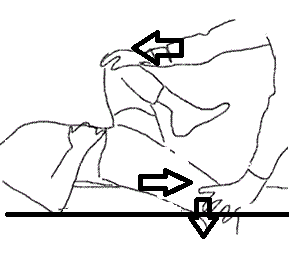DRY NEEDLING IS NOT ACUPUNCTURE
Physiotherapists use many different
manual techniques for relieving pain. One of the techniques which can be taken
into consideration is dry needling, particularly for treating myofascial
trigger points causing pain in muscles.
The trigger points are the irritable points
in the muscles, which are the source of pain in the whole muscle and the area
around these points. These points are not formed after any trauma, inflammation
or degeneration, but are developed on their own.
Before having a closer look at what
dry needling is, the dilemma should be cleared that it is definitely not
acupuncture. You are right in thinking so that filiform needles are inserted in
the body in both these techniques but, the purpose and the locations of needle
insertion are far different. Acupuncture is used in a technique for balance of
the flow of energy known as qi (chee) according to the Chinese medicine. In acupuncture,
certain points on the body are marked which are considered as the center for
balancing these life forces and energy flow. Whereas dry needling is purely
release of the intramuscular trigger points. There are formation of taut bands
in large muscle groups which are tender on palpation and you may observe nodules
formed deep inside the muscle, which causes pain on touch. The needle is
inserted penetrating the skin and fascia directly reaching the tender trigger points.
The therapist holds the muscle bulk, palpate the tender point and insert the
filiform needle. Dry needling in some
cases is not whole and sole treatment plan for a patient with musculoskeletal
pain but is rather a part of the whole treatment plan. As soon as the trigger
points are released, there is relief in pain and tenderness on the affected
area. The tension from the muscle is released, resulting in improved range of
motion and the transmission of nerve impulses to the motor end plate.
Direct stimulation of the contraction
knots formed in the muscle gives a twitch reaction on insertion of needle and
the muscle fibers in the taut band are relaxed in response to the twitch. There
is a subsequent release of the endogenous opioid substances which elicits an
analgesic response in the body and facilitates pain relief.
The procedure should be carried out
under proper environment. The instruments should be sterile, the needles used
nowadays are disposable and are thrown away after single use. The therapist
should be wearing gloves to avoid any direct contact to the area to be treated
to avoid any chances of infections.
The patient may experience slight
pain while carrying out the procedure but the pain is tolerable and there is
negligible blood loss. If the practitioner is well trained there may be no
amount of pain experienced.
Take care.
Jasrah.



Comments